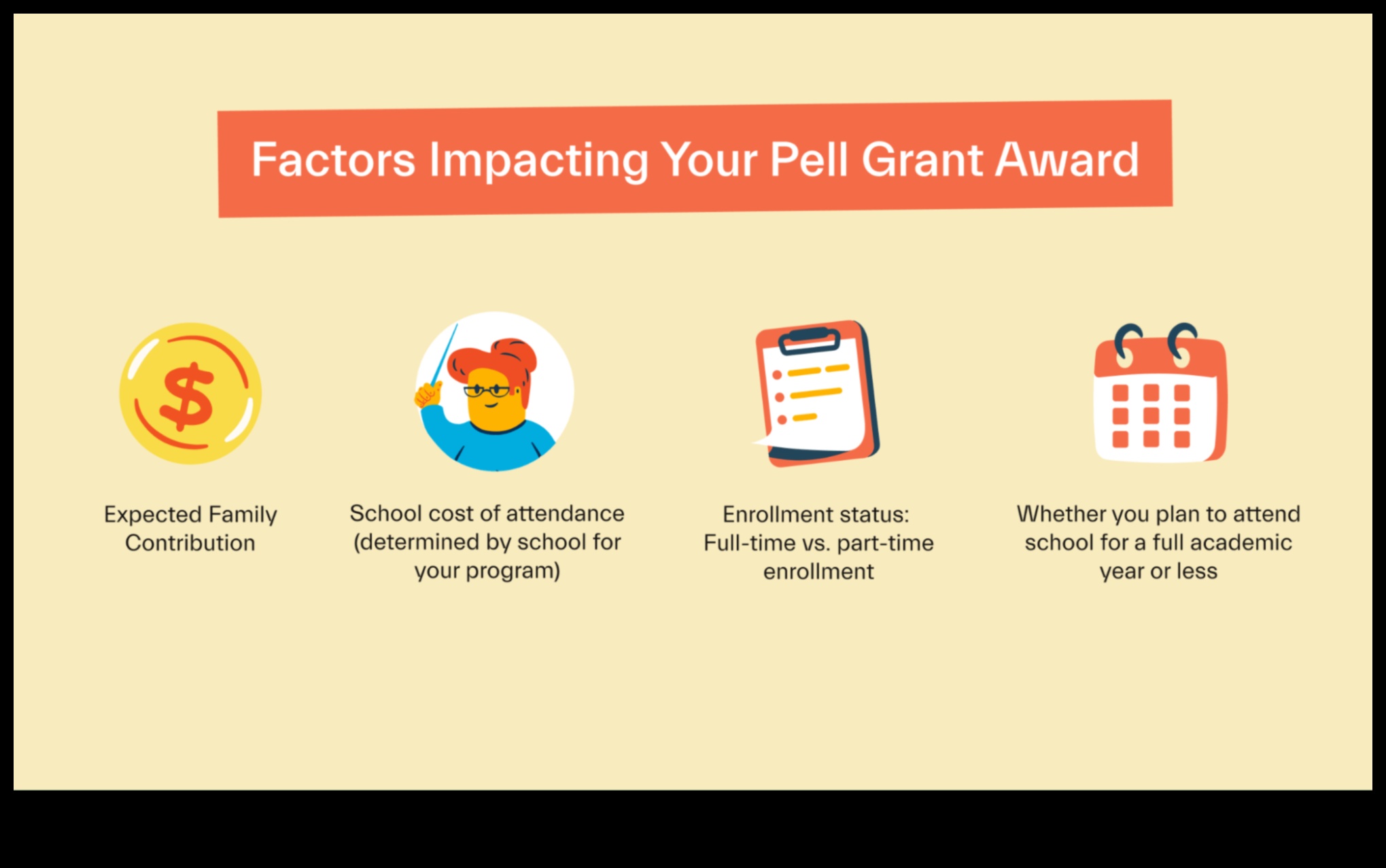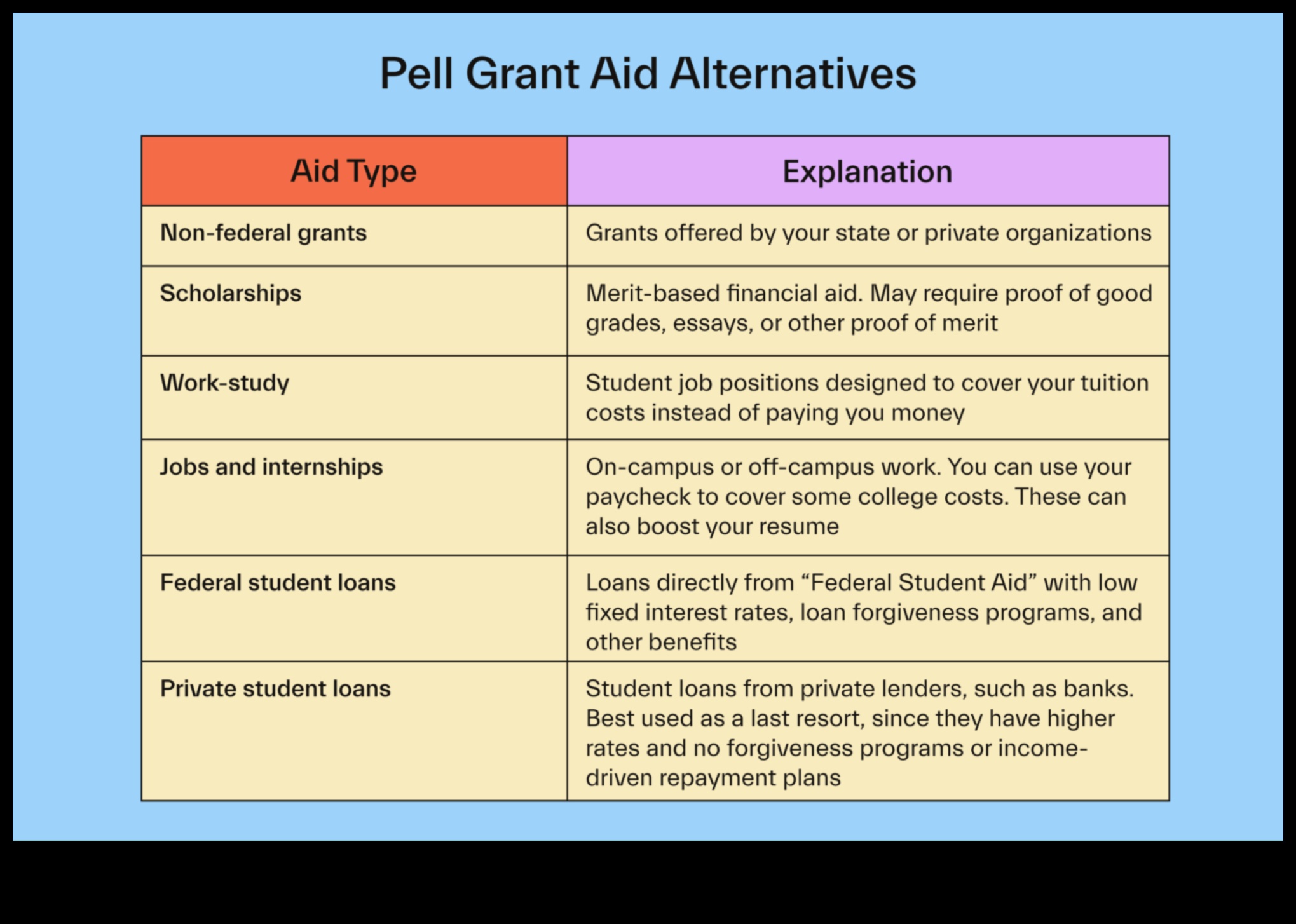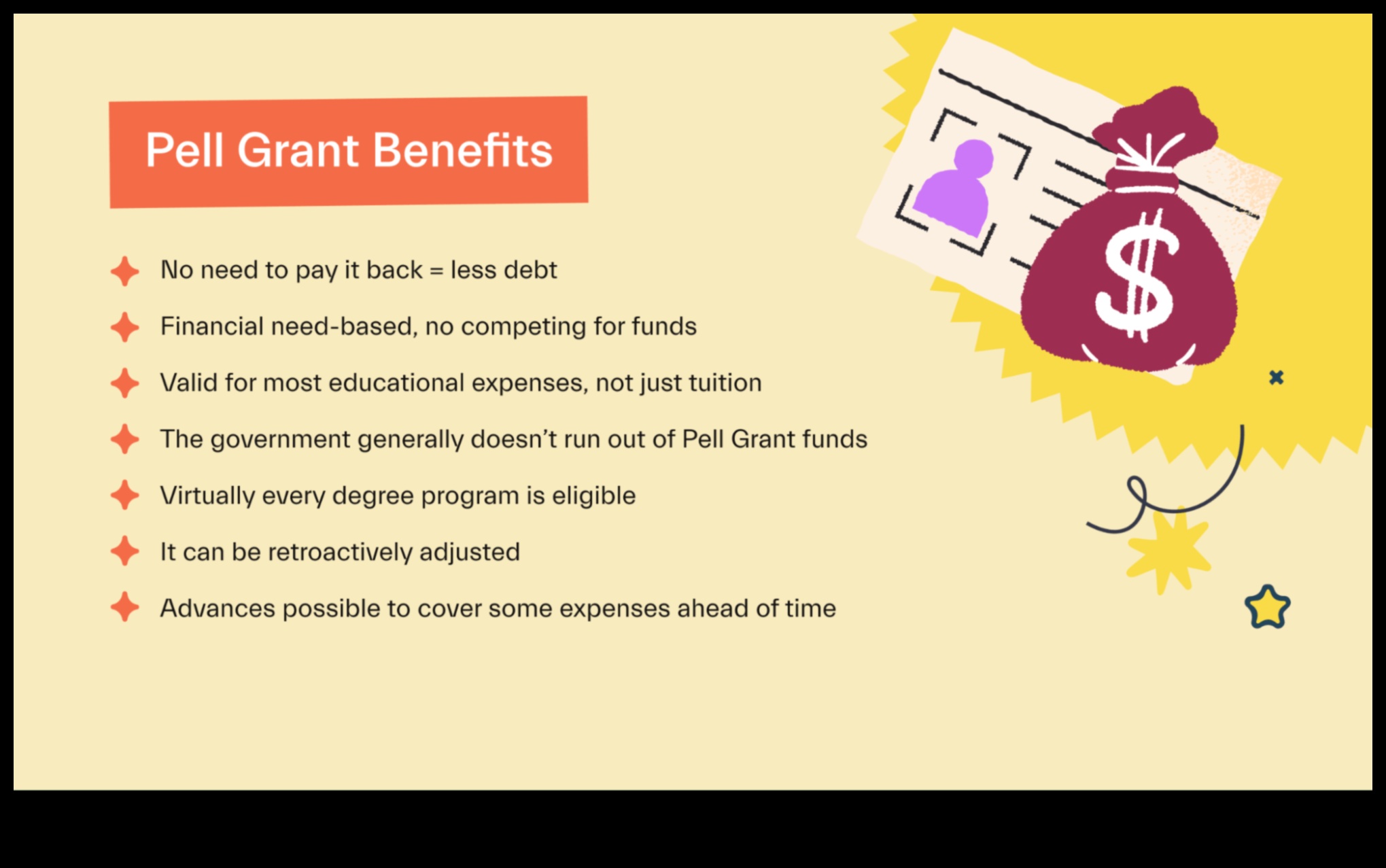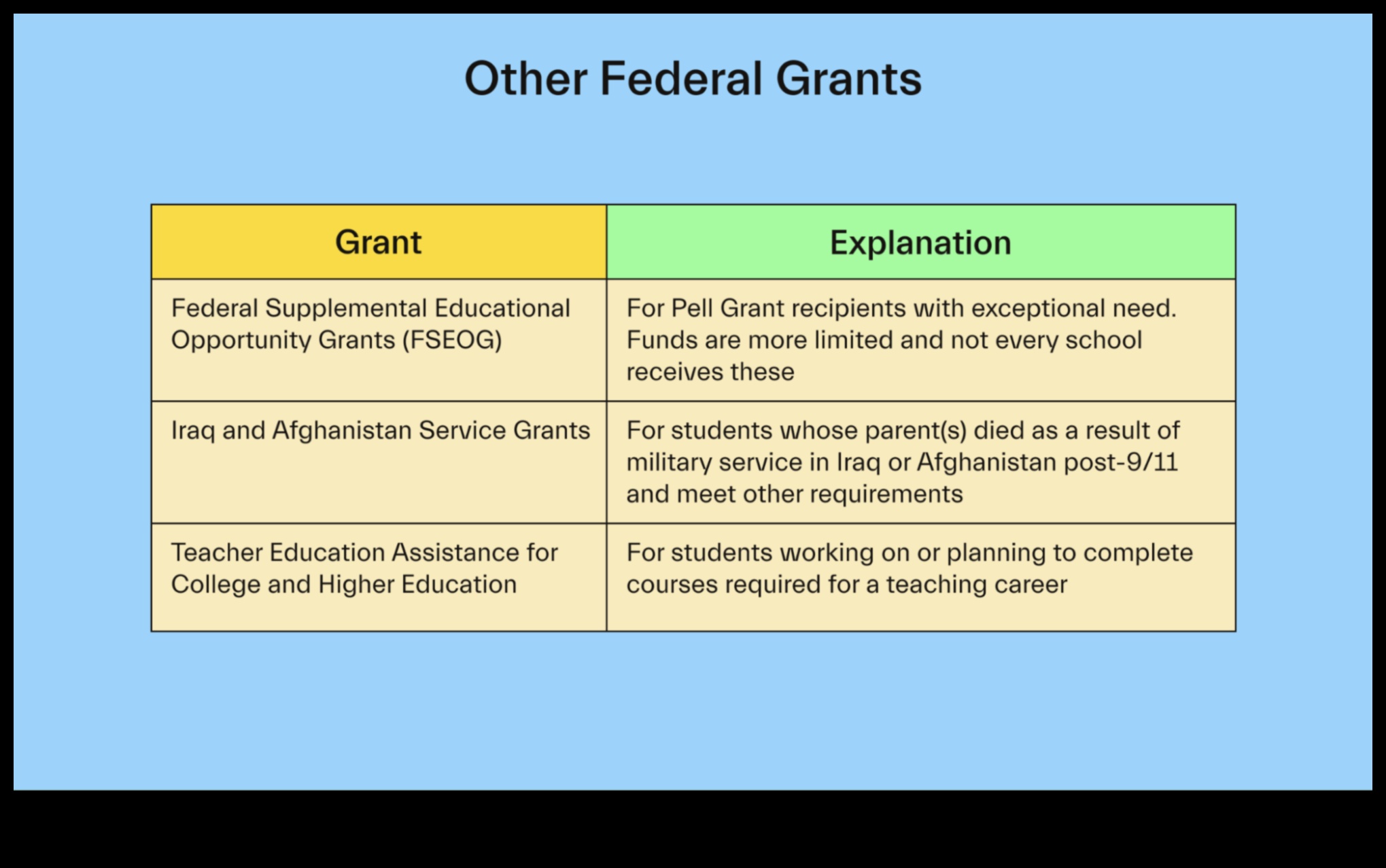
What is the Federal Pell Grant?
The Federal Pell Grant is a need-based grant awarded to undergraduate students who demonstrate financial need. It is the largest federal grant program for higher education, and it helps students pay for tuition, fees, books, and other expenses.

Who is eligible for the Federal Pell Grant?
To be eligible for the Federal Pell Grant, you must be a U.S. citizen or eligible noncitizen, and you must be enrolled in an eligible degree or certificate program at an accredited college or university. You must also meet certain financial need criteria.
How much is the Federal Pell Grant?
The amount of the Federal Pell Grant you receive depends on your financial need and the cost of attendance at your school. The maximum Pell Grant award for the 2022-2023 academic year is $6,495.
How do I apply for the Federal Pell Grant?
To apply for the Federal Pell Grant, you must complete the Free Application for Federal Student Aid (FAFSA). The FAFSA is available online at fafsa.gov.
What are the requirements for the Federal Pell Grant?
To be eligible for the Federal Pell Grant, you must meet the following requirements:
- You must be a U.S. citizen or eligible noncitizen.
- You must be enrolled in an eligible degree or certificate program at an accredited college or university.
- You must meet certain financial need criteria.
What are the benefits of the Federal Pell Grant?
The Federal Pell Grant can help you pay for the cost of attending college or university. It can also help you cover expenses such as tuition, fees, books, and living expenses.
The Federal Pell Grant is a need-based grant, which means that you must demonstrate financial need to be eligible. If you do not qualify for the Pell Grant, you may be eligible for other federal student aid programs, such as the Federal Stafford Loan or the Federal Work-Study Program.
To renew your Federal Pell Grant, you must complete the FAFSA each year. The FAFSA is available online at fafsa.gov.
If you lose your Federal Pell Grant, you may be eligible for other federal student aid programs, such as the Federal Stafford Loan or the Federal Work-Study Program. You may also be eligible for state or institutional aid.
- Q: What is the difference between the Federal Pell Grant and the Federal Stafford Loan?
- A: The Federal Pell Grant is a need-based grant, while the Federal Stafford Loan is a credit-based loan. The Pell Grant does not have to be repaid, while the Stafford Loan must be repaid with interest.
- Q: How much does the Federal Pell Grant cover?
- A: The amount of the Federal Pell Grant you receive depends on your financial need and the cost of attendance at your school. The maximum Pell Grant award for the 2022-2023 academic year is $6,495.
- Q: What are the deadlines for the Federal Pell Grant?
- A: The FAFSA must be submitted by the priority deadline for your school to be considered for the Federal Pell Grant. The priority deadline is usually in February or March.
| Feature | Description |
|---|---|
| Federal Pell Grant | A federal grant that helps students pay for college or career school. |
| Pell Grant Eligibility | Students must be US citizens or permanent residents, be enrolled in a degree or certificate program at least half-time, and have a financial need. |
| Pell Grant Amount | The amount of the Pell Grant you receive depends on your financial need and the cost of attendance at your school. |
| Pell Grant Application | You must submit the FAFSA form to apply for the Pell Grant. |
| Pell Grant Renewal | You must renew your Pell Grant each year you are enrolled in school. |
I. What is the Federal Pell Grant?
The Federal Pell Grant is a need-based grant awarded to undergraduate students who demonstrate financial need. It is the largest federal grant program for higher education, and it helps students pay for tuition, fees, books, and other expenses.
What is the Federal Pell Grant?
The Federal Pell Grant is a type of financial aid that is awarded to undergraduate students who demonstrate financial need.
Who is eligible for the Federal Pell Grant?
To be eligible for the Federal Pell Grant, you must:
- Be a U.S. citizen or eligible noncitizen
- Be enrolled in an eligible degree or certificate program at an accredited college or university
- Have a financial need
How much is the Federal Pell Grant?
The amount of the Federal Pell Grant that you receive will depend on your financial need and the cost of attendance at your school. The maximum Pell Grant award for the 2022-2023 academic year is $6,495.
How do I apply for the Federal Pell Grant?
To apply for the Federal Pell Grant, you must complete the Free Application for Federal Student Aid (FAFSA). The FAFSA is available online at studentaid.gov/fafsa.
What are the requirements for the Federal Pell Grant?
To be eligible for the Federal Pell Grant, you must meet the following requirements:
- Be a U.S. citizen or eligible noncitizen
- Be enrolled in an eligible degree or certificate program at an accredited college or university
- Have a financial need
- Complete the FAFSA
What are the benefits of the Federal Pell Grant?
The Federal Pell Grant can provide you with financial assistance to help you pay for college. The grant does not have to be repaid, so it can be a great way to reduce your student debt.
What are the disadvantages of the Federal Pell Grant?
The Federal Pell Grant is a limited resource, and there is no guarantee that you will receive the grant. The amount of the grant that you receive will depend on your financial need and the cost of attendance at your school.
How do I renew my Federal Pell Grant?
To renew your Federal Pell Grant, you must complete the FAFSA each year. The FAFSA is available online at studentaid.gov/fafsa.
What happens if I lose my Federal Pell Grant?
If you lose your Federal Pell Grant, you will have to pay the money back. You may also be required to repay any interest that has accrued on the grant.
FAQ
Q: What is the difference between the Federal Pell Grant and the Federal Stafford Loan?
A: The Federal Pell Grant is a gift aid, which means that you do not have to repay it. The Federal Stafford Loan is a loan, which means that you will have to repay the money that you borrow.
Q: Can I get a Federal Pell Grant if I am a graduate student?
A: No, the Federal Pell Grant is only available to undergraduate students.
Q: How long can I receive the Federal Pell Grant?
You can receive the Federal Pell Grant for up to 12 semesters or 6 years, whichever comes first.
Q: What happens if I drop out of school?
If you drop out of school, you may have to repay the Federal Pell Grant that you have already received.
I. What is the Federal Pell Grant?
The Federal Pell Grant is a type of financial aid that is awarded to undergraduate students who demonstrate financial need. The grant is funded by the U.S. Department of Education and is available to students who are enrolled at least half-time at an eligible institution.

II. Who is eligible for the Federal Pell Grant?
To be eligible for the Federal Pell Grant, you must:
- Be a U.S. citizen or eligible noncitizen
- Be enrolled at least half-time at an eligible institution
- Have a financial need

III. How much is the Federal Pell Grant?
The amount of the Federal Pell Grant that you receive will depend on your financial need and the cost of attendance at your school. The maximum Pell Grant award for the 2022-2023 academic year is $6,495.

IV. How do I apply for the Federal Pell Grant?
To apply for the Federal Pell Grant, you must complete the Free Application for Federal Student Aid (FAFSA). The FAFSA is available online at studentaid.gov/fafsa.
V. What are the requirements for the Federal Pell Grant?
To be eligible for the Federal Pell Grant, you must meet the following requirements:
- Be a U.S. citizen or eligible noncitizen
- Be enrolled at least half-time at an eligible institution
- Have a financial need
- Have not exceeded the maximum number of Pell Grant awards
VI. What are the benefits of the Federal Pell Grant?
The Federal Pell Grant can provide you with a number of benefits, including:
- Helping you pay for college costs
- Reducing your student loan debt
- Encouraging you to continue your education
VII. What are the disadvantages of the Federal Pell Grant?
The Federal Pell Grant does have some disadvantages, including:
- The amount of the grant is limited
- The grant is not renewable
- The grant may not cover all of your college costs
VIII. How do I renew my Federal Pell Grant?
To renew your Federal Pell Grant, you must complete the FAFSA each year. You must also meet the eligibility requirements for the Pell Grant.
IX. What happens if I lose my Federal Pell Grant?
If you lose your Federal Pell Grant, you may be eligible for other types of financial aid, such as the Federal Supplemental Educational Opportunity Grant (SEOG) or the Federal Work-Study Program. You can also apply for private student loans or scholarships.
X. FAQ
Q: What is the difference between the Federal Pell Grant and the Federal Supplemental Educational Opportunity Grant (SEOG)?
A: The Federal Pell Grant is a need-based grant that is awarded to undergraduate students who demonstrate financial need. The Federal Supplemental Educational Opportunity Grant (SEOG) is also a need-based grant, but it is awarded to students who have exceptional financial need.
Q: What is the difference between the Federal Pell Grant and the Federal Work-Study Program?
A: The Federal Pell Grant is a need-based grant that is awarded to undergraduate students who demonstrate financial need. The Federal Work-Study Program is a work-study program that allows students to earn money to help pay for college.
Q: What is the maximum number of Pell Grant awards that I can receive?
A: The maximum number of Pell Grant awards that you can receive is 12.
Q: How long does it take to receive a Pell
I. What is the Federal Pell Grant?
The Federal Pell Grant is a need-based grant awarded to undergraduate students who demonstrate financial need. It is the largest federal grant program for higher education, and it helps students pay for tuition, fees, books, and other expenses.
I. What is the Federal Pell Grant?
The Federal Pell Grant is a need-based grant for undergraduate students who demonstrate financial need. It is the largest federal grant program for higher education, and it is awarded by the U.S. Department of Education.
II. Who is eligible for the Federal Pell Grant?
To be eligible for the Federal Pell Grant, you must be a U.S. citizen or eligible noncitizen, and you must be enrolled in an eligible degree or certificate program at an accredited college or university. You must also meet certain income requirements.
III. How much is the Federal Pell Grant?
The amount of the Federal Pell Grant you receive depends on your financial need and the cost of attendance at your school. The maximum Pell Grant for the 2022-23 academic year is $6,495.
IV. How do I apply for the Federal Pell Grant?
To apply for the Federal Pell Grant, you must fill out the Free Application for Federal Student Aid (FAFSA). The FAFSA is available online at fafsa.gov.
V. What are the requirements for the Federal Pell Grant?
To be eligible for the Federal Pell Grant, you must meet the following requirements:
- You must be a U.S. citizen or eligible noncitizen
- You must be enrolled in an eligible degree or certificate program at an accredited college or university
- You must meet certain income requirements
VI. What are the benefits of the Federal Pell Grant?
The Federal Pell Grant can help you cover the cost of college, including tuition, fees, books, and living expenses. It is a need-based grant, so you do not have to repay it.
VII. What are the disadvantages of the Federal Pell Grant?
The Federal Pell Grant is a limited resource, and not all students who are eligible for the grant will receive it. The amount of the grant you receive also depends on your financial need and the cost of attendance at your school.
VIII. How do I renew my Federal Pell Grant?
To renew your Federal Pell Grant, you must fill out the FAFSA each year. You must also meet the same eligibility requirements as you did when you first applied for the grant.
IX. What happens if I lose my Federal Pell Grant?
If you lose your Federal Pell Grant, you may be eligible for other federal student aid programs, such as the Federal Supplemental Educational Opportunity Grant (FSEOG) or the College Work-Study Program. You may also be eligible for private student loans or scholarships.
X. FAQ
- Q: How much does the Federal Pell Grant cover?
- A: The amount of the Federal Pell Grant you receive depends on your financial need and the cost of attendance at your school. The maximum Pell Grant for the 2022-23 academic year is $6,495.
- Q: How long can I receive the Federal Pell Grant?
- A: You can receive the Federal Pell Grant for up to 12 semesters or 6 years, whichever comes first.
- Q: What if I drop below half-time enrollment?
- A: If you drop below half-time enrollment, you may lose your Federal Pell Grant.
- Q: What if I withdraw from school?
- A: If you withdraw from school, you may have to repay some or all of your Federal Pell Grant.
VII. What are the disadvantages of the Federal Pell Grant?
There are a few disadvantages to the Federal Pell Grant. First, the amount of the grant is limited. The maximum award for the 2022-2023 academic year is $6,495. This means that students who need more financial aid may not be able to cover all of their costs with the Pell Grant.
Second, the Pell Grant is only available to students who meet certain eligibility requirements. These requirements include being a U.S. citizen or permanent resident, being enrolled in an eligible degree or certificate program, and having a financial need. Students who do not meet these requirements will not be eligible for the Pell Grant.
Finally, the Pell Grant is a need-based grant. This means that students who have more financial resources available to them will receive a smaller Pell Grant award. This can be a disadvantage for students who have high costs but do not have a lot of financial resources.
Overall, the Federal Pell Grant is a valuable financial aid resource for many students. However, it is important to be aware of the disadvantages of the grant before you apply.
VIII. How do I renew my Federal Pell Grant?
To renew your Federal Pell Grant, you must:
- Be enrolled at least half-time (6 credits) in a degree or certificate program at an eligible institution.
- Maintain a satisfactory academic standing.
- Complete the Free Application for Federal Student Aid (FAFSA) each year.
If you meet all of these requirements, you will automatically be considered for a renewal of your Federal Pell Grant. You will receive a notification from your school if your grant is renewed.
If you have any questions about renewing your Federal Pell Grant, you should contact your school’s financial aid office.
If you lose your Federal Pell Grant, you may be eligible to receive a Federal Pell Grant reinstatement. To be eligible for reinstatement, you must:
- Have completed at least 60% of the semester or quarter for which you received the grant
- Have a satisfactory academic standing
- Have not been convicted of a drug-related felony
If you are eligible for reinstatement, you must submit a request to your school’s financial aid office. The financial aid office will review your request and determine if you are eligible to receive a reinstatement.
If you are granted a reinstatement, you will receive a prorated amount of the grant that you lost. The prorated amount is based on the number of credits that you completed after you lost the grant.
For more information on Federal Pell Grant reinstatement, please visit the U.S. Department of Education website.
Federal Pell Grant
I. What is the Federal Pell Grant?
The Federal Pell Grant is a need-based grant awarded to undergraduate students who demonstrate financial need.
II. Who is eligible for the Federal Pell Grant?
To be eligible for the Federal Pell Grant, you must be a U.S. citizen or eligible noncitizen, enrolled in an eligible degree or certificate program at an eligible institution, and demonstrate financial need.
III. How much is the Federal Pell Grant?
The amount of the Federal Pell Grant you receive depends on your financial need and the cost of attendance at your school.
IV. How do I apply for the Federal Pell Grant?
To apply for the Federal Pell Grant, you must complete the Free Application for Federal Student Aid (FAFSA).
V. What are the requirements for the Federal Pell Grant?
To be eligible for the Federal Pell Grant, you must meet the following requirements:
- Be a U.S. citizen or eligible noncitizen
- Be enrolled in an eligible degree or certificate program at an eligible institution
- Demonstrate financial need
VI. What are the benefits of the Federal Pell Grant?
The Federal Pell Grant can provide you with financial assistance to help you pay for college. The grant is not a loan, so you do not have to repay it.
VII. What are the disadvantages of the Federal Pell Grant?
The Federal Pell Grant is a need-based grant, so you may not qualify if you do not have financial need. The amount of the grant you receive is also limited by your financial need and the cost of attendance at your school.
VIII. How do I renew my Federal Pell Grant?
To renew your Federal Pell Grant, you must complete the FAFSA each year.
IX. What happens if I lose my Federal Pell Grant?
If you lose your Federal Pell Grant, you may be eligible for other financial aid options, such as the Federal Supplemental Educational Opportunity Grant (FSEOG) or the College Work-Study Program.
X. FAQ
- Q: What is the difference between the Federal Pell Grant and the Federal Supplemental Educational Opportunity Grant (FSEOG)?
- A: The Federal Pell Grant is a need-based grant that is awarded to undergraduate students who demonstrate financial need. The FSEOG is also a need-based grant, but it is awarded to students with the most financial need.
- Q: What is the difference between the Federal Pell Grant and the College Work-Study Program?
- A: The Federal Pell Grant is a grant that you do not have to repay, while the College Work-Study Program is a work-study program that allows you to earn money to help pay for college.